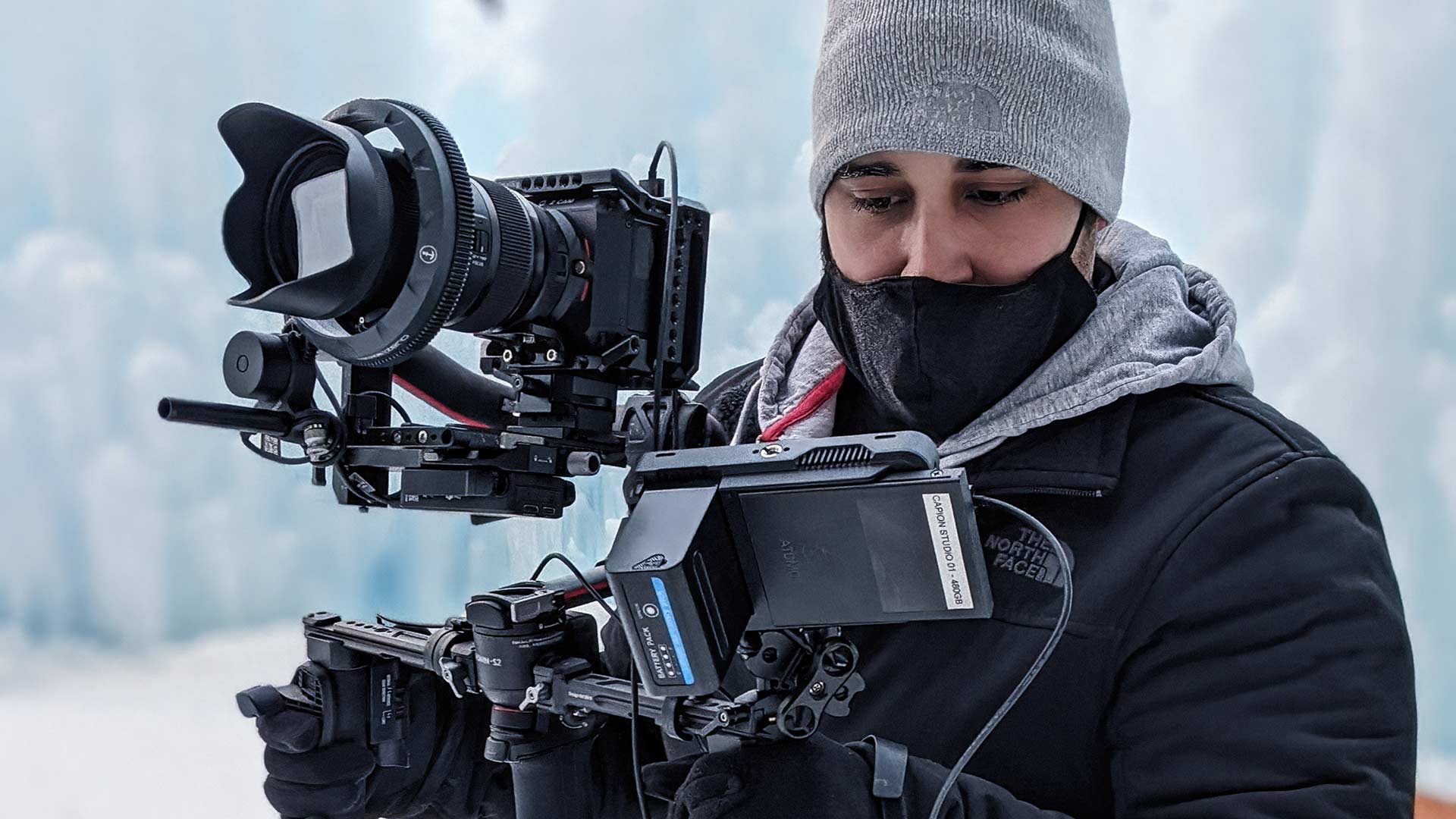
Filmmaker Kevin Luiz takes ProRes RAW on a winter stress test to find out if it really could be the perfect codec.
Make no mistake, this body of work is a statement. A statement that less is more, a statement as to how far technology has come, that you do not need to spend a small fortune to produce incredible images, and that ProRes RAW is, in fact, the future codec of our industry.
For the past four years, my partner and I have ventured out to Woodstock, New Hampshire, to see the Ice Caste sculptures erected every winter. Each year, I’ve taken it upon myself to use this location as a backdrop to push the limits of new emerging technology. While modest, the first year we went, I tested the DJI Osmo Mobile paired with a Samsung Note 3 in 4K resolution.
The second year, I tried the GH5 with its newly released 6k density anamorphic mode. In the third year, I went equipped with the GH5S and a spherical lens set to test lowlight shooting capabilities. Finally, this fourth year, I wanted to revisit ProRes RAW to really put the codec through its paces. I achieved this via the Atomos Ninja V and a Z Cam E2C mounted on the DJI RS2. Noteworthy, the tools utilized are all either mid or entry-level products.
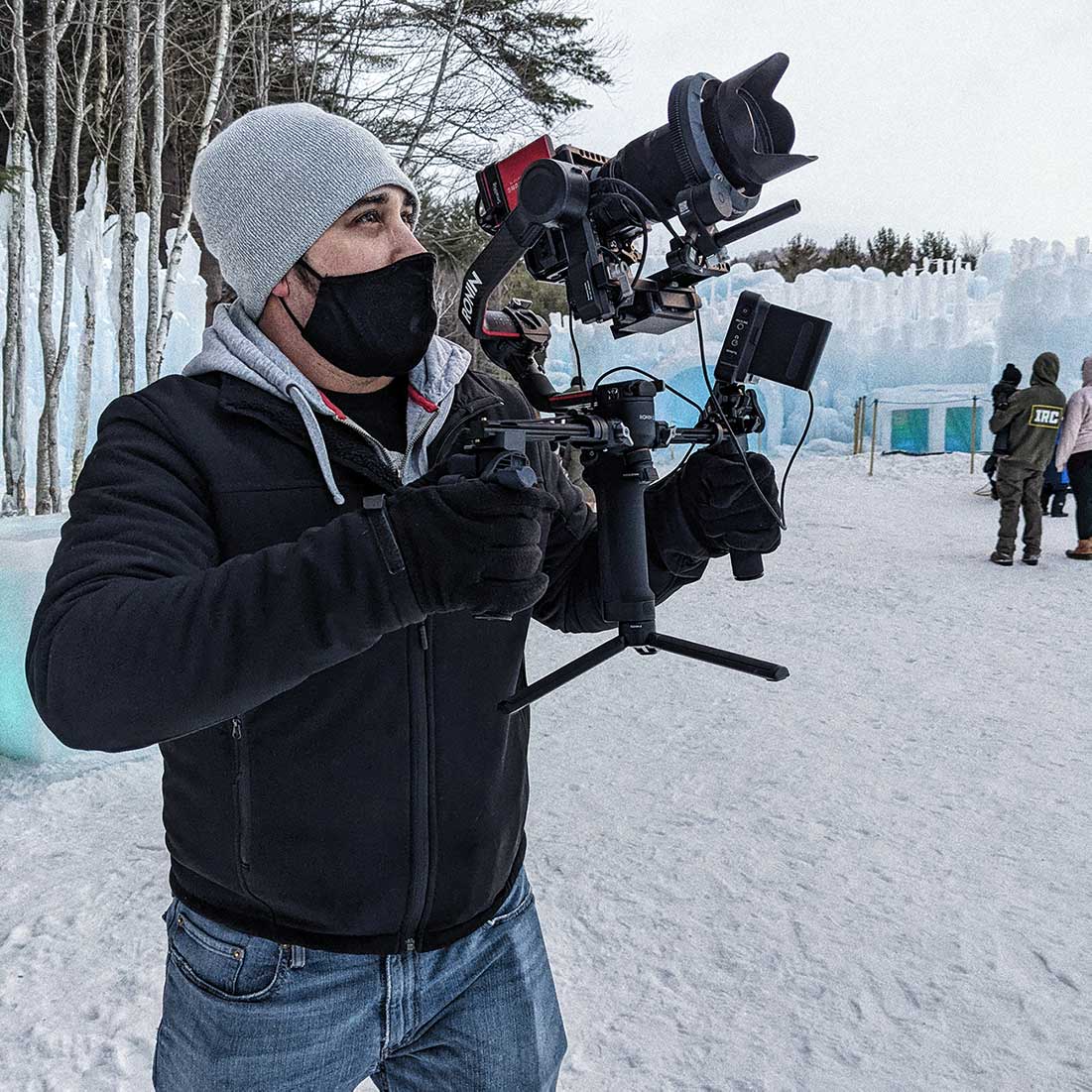
Filming "Enchanted Winter 4" . Image: Kevin Luiz.
The real question I had was twofold. The first part of my question was, “Could I use the lowest point of entry in the Z Cam lineup (E2C) to produce a pleasing image in ProRes RAW in an ever-changing environment?” The second part of the question I was seeking to answer was; “Has ProRes RAW finally matured to a place where it’s a viable workflow in an NLE to play back natively without hindrance?”. So, with my rig in hand, I sought to answer those questions.
Mind you, this was not my first bout with ProRes RAW. Upon its introduction to the Z Cam lineup, I had tested it vigorously in the early days of its launch. It wasn’t the smoothest experience, from an inability to monitor it properly on waveforms during capture to issues with colour management. There were also conversion problems into logarithmic space, a lack of support to alter standard raw variables such as ISO, WB, and Tint, and overall sluggish playback on what most would consider a beast of a computer. Well, a few months have passed since then, and while it’s partially supported in Adobe Premiere Pro CC, I can say unequivocally, it has “come of age” in the latest version of FCP.
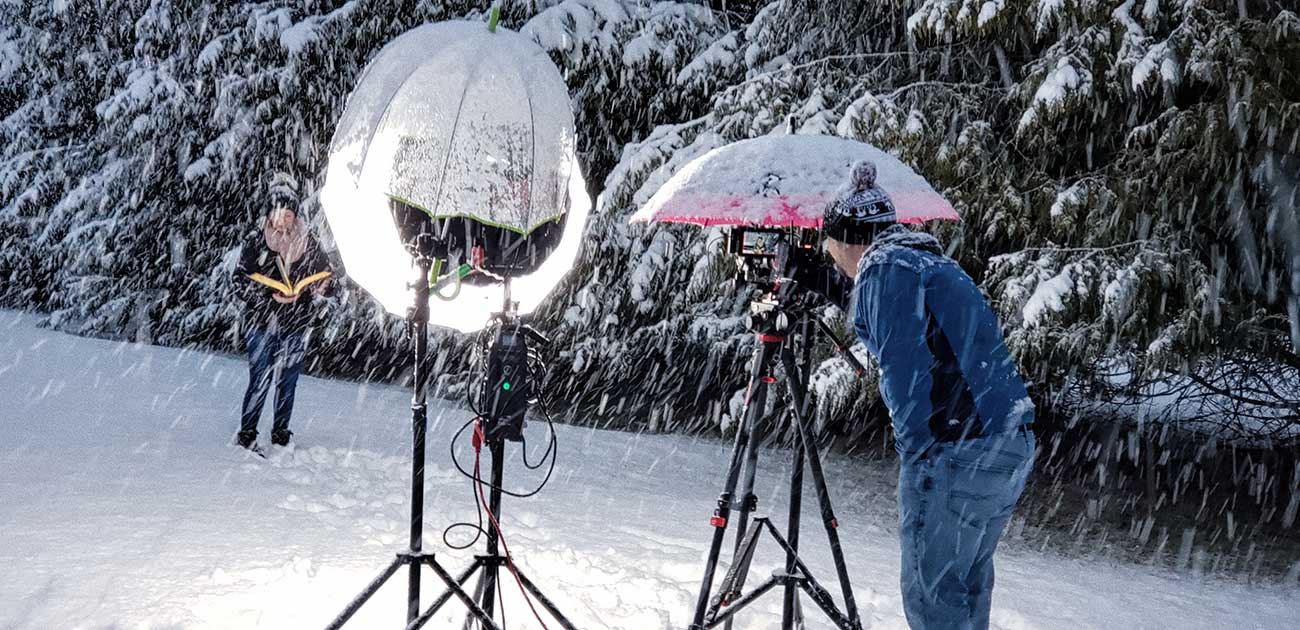
White out! Filming in heavy snow tested the gear. Image: Kevin Luiz.
Now in FCP X 10.5.1 running on Big Sur, I can finally see and feel the full weight of ProRes RAW in my grades. The colour depth is immediately visible as I can push and pull my 12-bit colours hard, and for the first time in a long time, I am getting the look I want quickly* (keyword) in my grade. It feels reminiscent of my earlier days with Blackmagic Design when I was neck-deep in Cinema DNG file sequences from the BMCC 2.5K & 4K models, of course, without the headache and file sizes to match. The image is deep & robust, flaunting the total flexibility to change the variables I need to post-process.
As a matter of fact, while in the field, I used 5,000 ISO during coloured light scenes in the woods, and despite my waveforms, it was the incorrect gain to be operating at. Once I got back into my edit, I concluded that the look I was after should have been set to 800 ISO. Now, obviously, in an ordinary ProRes world where we are baking in our variables, I would have been reliant on pulling down my curves in post, but at the loss of dynamic range performance and tonality. It’s obviously best in low light scenes to over-expose your subjects at the expense of noise and pull down instead of trying to lift up information that isn’t necessarily there in the shadows. That said, with ProRes RAW, your ISO almost becomes a secondary factor to your exposure hexagon (Aperture, ISO, Shutter, EV, ND, & Lighting). I can see why compressed raw formats like REDCODE have been so popular for so long because of their flexibility, paired with their “bite”.
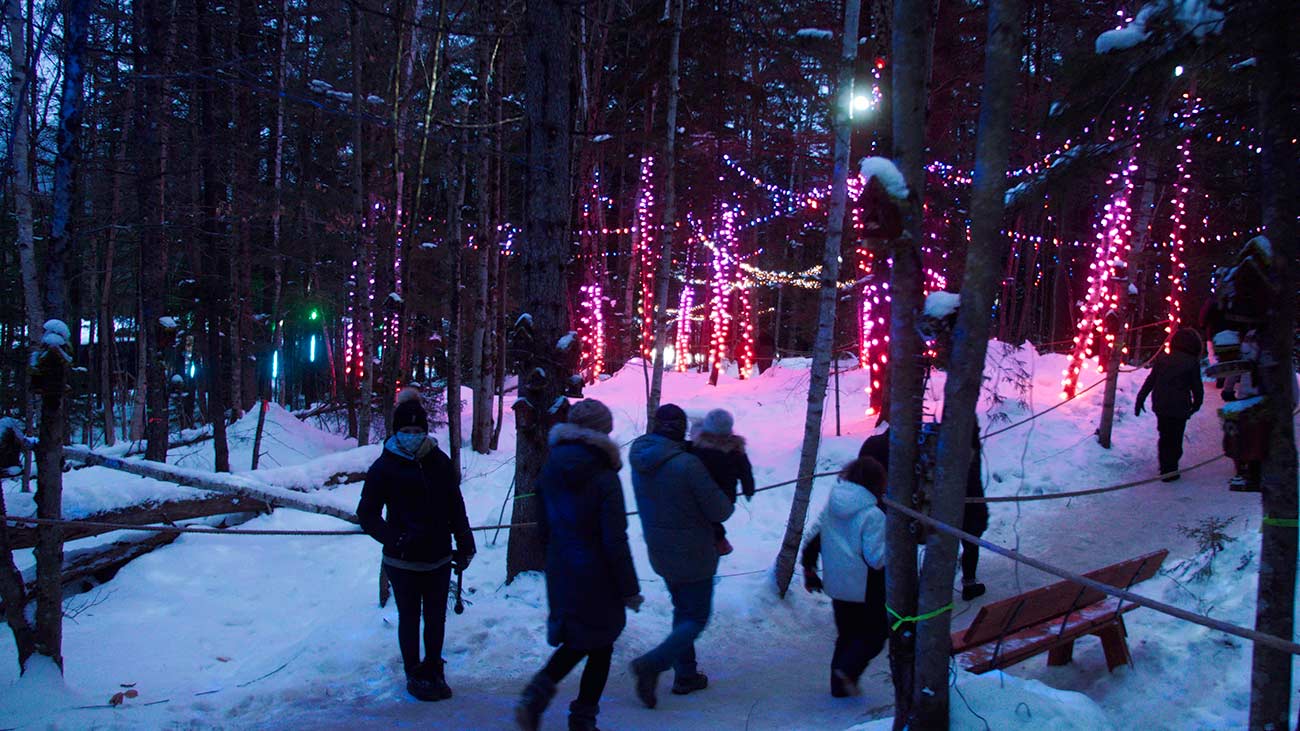
Image: Kevin Luiz.
It’s not all a “free lunch”, however. ProRes RAW, I’d say, has moved past its infancy stage and is now entering into adolescence. While manageable in file size, the codec still lacks a lower-tier alternative like its ProRes LT cousin and does not have the full flavours of compression as with other options like REDCODE Raw. While ProRes RAW performs almost flawlessly in FCP, it has still yet to come of age in apps like Premiere, nor has it developed roots in many colourist’s platform of choice, “Resolve”. It’s still a choppy affair in Premiere, as I’m not quite sure Adobe has harnessed the full power of the Metal acceleration to live de-Bayer the images.
On the other hand, Resolve is quietly holding the codec at bay as it tries to catch fire with its own answer to a compressed raw codec, BRAW. Unfortunately, though, it seems like it’s almost a losing fight not to include ProRes RAW in Resolve at this point, since Atomos and Apple have surpassed BRAW availability with the inclusion of its codec across 27 cameras and growing. Unfortunately, we don’t yet know the full reasons why ProRes RAW continues to elude Resolve.
Regarding the hardware itself, The E2C and Ninja V performed flawlessly. It’s no easy feat filming in 4 degrees (Fahrenheit), yet neither the E2C nor the Ninja V hiccupped once. From snow to ice to droplets of water and extreme wind chills, the hardware simply worked. It’s really refreshing when the tools “get out of the way” between you and your subject. Of course, we really pushed the equipment to the max amidst a blizzard for the opening content with Christine reading from that 140-year-old book! For that, I made sure to umbrella the equipment since the camera gear is not weather-sealed. While the Aputure 600D Pro is weatherproof to an extent, I also made sure I placed an umbrella over its vents and ballast to ensure minimal exposure to the elements. It all came together rather brilliantly, and for entry-level products, it’s astounding how much “bite” these devices pack into their images these days.
I hope this small statement video has inspired you to look further into these products and ProRes RAW workflows. At a minimum, I hope this is a testament that big images can be achieved with less.
Have you shot with the E2C in ProRes RAW? Let us know about your experience with it in the comments below!
Tags: Post & VFX Production Featured

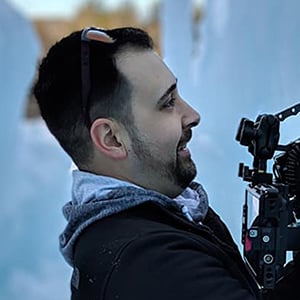
Comments